Are you curious about the world’s tallest mountain and eager to discover its location? WHAT.EDU.VN offers the answers you seek! This article dives deep into the topic, exploring not just the highest peak but also other remarkable mountains around the globe. Learn about their heights, locations, and fascinating facts, expanding your geographical knowledge and satisfying your thirst for exploration, plus information about mountain ranges, elevation, and tectonic plates.
1. Understanding the Earth’s Giants: What is the Biggest Mountain in the World?
The biggest mountain in the world, measured from base to summit, is Mauna Kea in Hawaii, even though only part of it is above sea level. While Mount Everest boasts the highest altitude above sea level, Mauna Kea’s total size dwarfs it.
Mauna Kea is a dormant volcano, and its base lies on the ocean floor. From base to summit, it measures over 33,500 feet (10,211 meters). Only about 13,796 feet (4,205 meters) of Mauna Kea are above sea level. Mount Everest, by comparison, stands at 29,031.7 feet (8,848.86 meters) above sea level.
1.1 Why Mauna Kea Claims the Title of “Biggest”
Mauna Kea’s massive size often surprises people because most only consider the portion visible above the water. However, the vast majority of this mountain exists below sea level. Here’s why it claims the title:
- Base-to-Peak Measurement: When measuring from the base of the mountain to its highest peak, Mauna Kea surpasses Mount Everest by thousands of feet.
- Volcanic Formation: As a shield volcano, Mauna Kea was formed by countless lava flows over millions of years. This gradual accumulation resulted in its enormous underwater base.
1.2 Quick Facts About Mauna Kea
| Fact | Detail |
|---|---|
| Type | Dormant Shield Volcano |
| Location | Hawaii, USA |
| Total Height | Over 33,500 feet (10,211 meters) |
| Above Sea Level | 13,796 feet (4,205 meters) |
| Significance | Home to astronomical observatories due to its high altitude and clear skies |
| Cultural Importance | Considered sacred in Hawaiian culture |
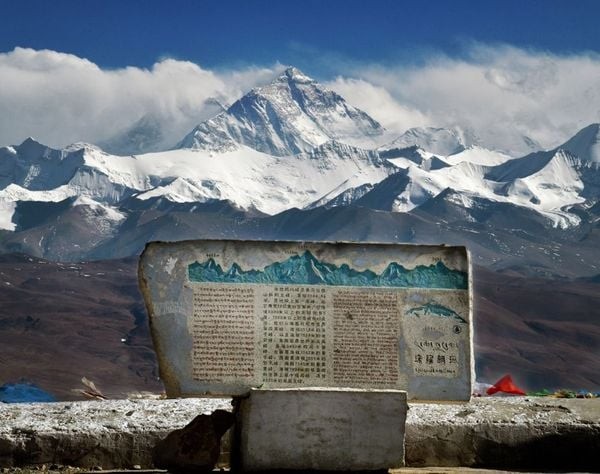
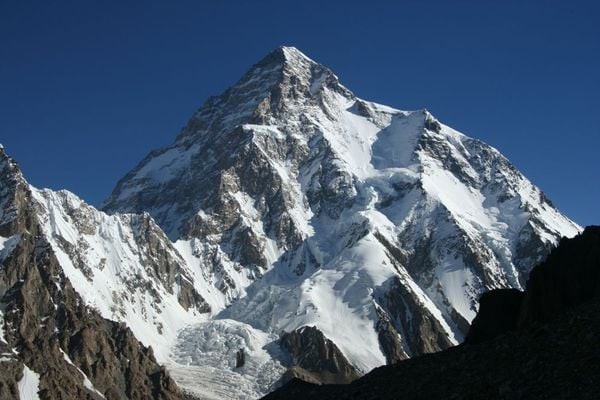


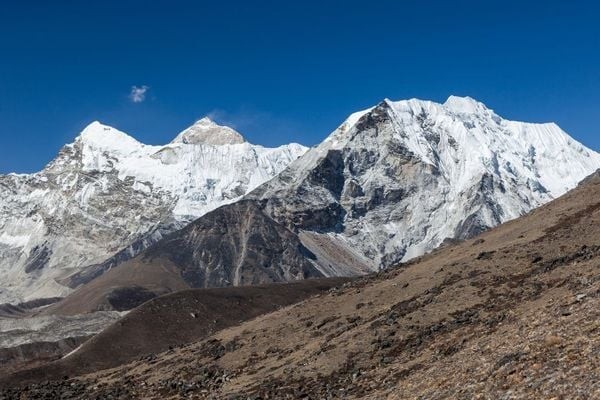
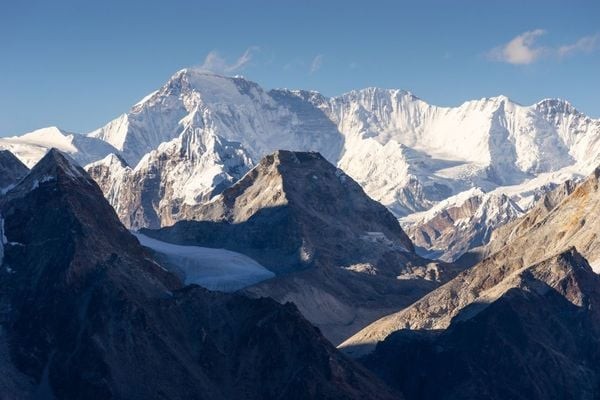

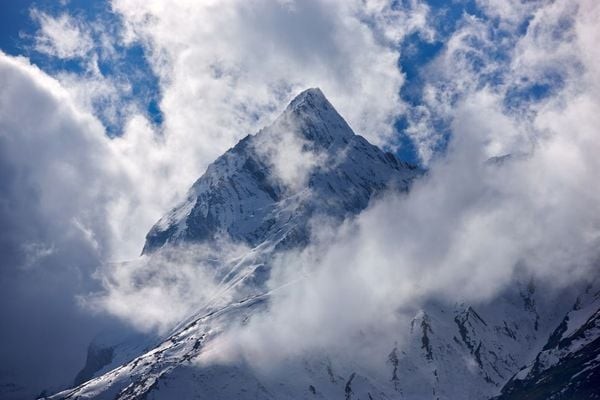
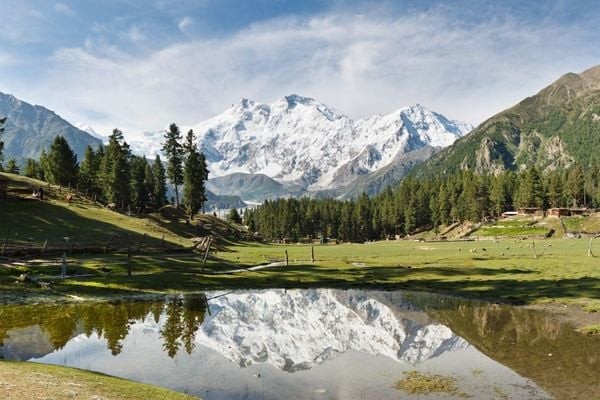
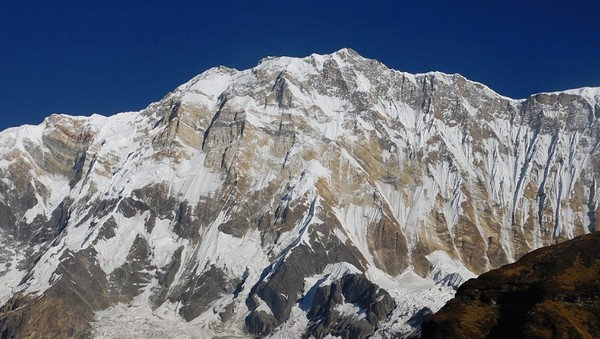
1.3 Exploring Mauna Kea’s Unique Environment
The summit of Mauna Kea offers a unique alpine environment. Temperatures can drop below freezing, and snow is not uncommon, despite being in Hawaii. This makes it a fascinating contrast to the tropical beaches found at sea level.
Key Features of Mauna Kea’s Environment:
- Clear Skies: The high altitude and stable atmosphere make Mauna Kea one of the best locations in the world for astronomical observations.
- Dry Climate: The summit is above the cloud inversion layer, resulting in a dry climate with minimal precipitation.
- Endemic Species: The mountain is home to unique species of insects and plants adapted to the harsh alpine conditions.
1.4 The Controversy Surrounding Mauna Kea’s Observatories
While Mauna Kea is an ideal location for astronomical research, the construction of observatories on its summit has faced opposition. Native Hawaiians consider the mountain sacred, and the presence of telescopes is seen as a desecration of their cultural heritage.
Key Points of the Controversy:
- Cultural Significance: Mauna Kea is deeply revered in Hawaiian traditions as a place of spiritual connection.
- Environmental Concerns: Construction and operation of observatories can impact the fragile alpine ecosystem.
- Ongoing Protests: Demonstrations and legal challenges have sought to protect Mauna Kea from further development.
2. The Awe-Inspiring Mount Everest: What is the Highest Mountain in the World Above Sea Level?
The highest mountain above sea level is Mount Everest, towering at 8,848.86 meters (29,031.7 feet). Located in the Himalayas on the border between Nepal and Tibet (China), it’s a symbol of human ambition and the ultimate mountaineering challenge.
2.1 Quick Facts About Mount Everest
| Fact | Detail |
|---|---|
| Alternative Names | Sagarmatha (Nepali), Chomolungma (Tibetan) |
| Location | Himalayas, Nepal/Tibet (China) |
| Height Above Sea Level | 8,848.86 meters (29,031.7 feet) |
| First Ascent | Sir Edmund Hillary and Tenzing Norgay (1953) |
| Climbing Difficulty | Extreme; requires extensive experience, training, and equipment |
| Environmental Challenges | Overcrowding, pollution, and the impact of climate change |
2.2 The Allure and Challenge of Climbing Everest
Mount Everest has captivated climbers for decades. The extreme altitude, unpredictable weather, and treacherous terrain make it one of the most dangerous and demanding climbs in the world.
Key Challenges of Climbing Everest:
- Altitude Sickness: The “death zone” above 8,000 meters presents severe challenges to human physiology.
- Extreme Weather: High winds, blizzards, and sudden temperature drops can be deadly.
- Technical Difficulty: Navigating crevasses, icefalls, and steep rock faces requires advanced climbing skills.
2.3 The Impact of Tourism on Mount Everest
The increasing popularity of Everest has led to overcrowding, pollution, and environmental degradation. The accumulation of trash and human waste poses a significant threat to the mountain’s fragile ecosystem.
Environmental Concerns:
- Trash Accumulation: Discarded gear, oxygen cylinders, and food wrappers litter the mountain.
- Human Waste: Improper disposal of human waste pollutes water sources and creates health hazards.
- Glacier Melt: Climate change is causing glaciers on Everest to melt, increasing the risk of avalanches and altering the landscape.
2.4 Efforts to Protect Mount Everest
Various organizations and governments are working to address the environmental challenges on Mount Everest. These efforts include:
- Clean-up Expeditions: Teams of climbers and volunteers remove tons of trash from the mountain each year.
- Waste Management Programs: Initiatives promote the use of biodegradable products and proper waste disposal techniques.
- Climbing Regulations: Restrictions on the number of climbers and stricter permit requirements aim to reduce overcrowding.
3. Comparing Giants: Mauna Kea vs. Mount Everest
| Feature | Mauna Kea (Hawaii) | Mount Everest (Himalayas) |
|---|---|---|
| Measurement | Base to Summit | Sea Level to Summit |
| Total Height | Over 33,500 feet (10,211 meters) | 8,848.86 meters (29,031.7 feet) |
| Height Above Sea Level | 13,796 feet (4,205 meters) | 8,848.86 meters (29,031.7 feet) |
| Geological Type | Dormant Shield Volcano | Part of the Himalayan Mountain Range |
| Primary Significance | Biggest Mountain (Base to Summit) | Highest Mountain Above Sea Level |
| Other Significance | Home to world-renowned astronomical observatories | Significant for mountaineering and exploration |
3.1 Why the Difference in Measurement Matters
The distinction between measuring from base to summit versus above sea level is crucial. While Mount Everest impresses with its height above the ocean, Mauna Kea showcases the immense geological forces that can create such massive structures.
3.2 Understanding Elevation and Prominence
Beyond height, elevation and prominence are key concepts in understanding mountains:
- Elevation: The height of a mountain’s summit above sea level.
- Prominence: How much a mountain stands out from its surroundings. It’s the vertical distance between the summit and the lowest contour line encircling it and no higher summit.
3.3 How Tectonic Plates Contribute to Mountain Formation
Both Mauna Kea and Mount Everest owe their existence to tectonic plate activity:
- Mauna Kea: Formed by the slow movement of the Pacific Plate over a hotspot, causing continuous volcanic activity.
- Mount Everest: Created by the collision of the Indian and Eurasian plates, resulting in the uplift of the Himalayas.
4. Exploring the Other Titans: Top 10 Highest Mountains in the World
While Mauna Kea and Mount Everest often steal the spotlight, the Earth is home to many other towering peaks:
- Mount Everest: 8,848.86 m (29,031.7 ft), Himalayas
- K2: 8,611 m (28,251 ft), Karakoram
- Kangchenjunga: 8,586 m (28,169 ft), Himalayas
- Lhotse: 8,516 m (27,940 ft), Himalayas
- Makalu: 8,485 m (27,838 ft), Himalayas
- Cho Oyu: 8,188 m (26,864 ft), Himalayas
- Dhaulagiri: 8,167 m (26,795 ft), Himalayas
- Manaslu: 8,163 m (26,781 ft), Himalayas
- Nanga Parbat: 8,126 m (26,660 ft), Himalayas
- Annapurna I: 8,091 m (26,545 ft), Himalayas
4.1 K2: The Savage Mountain
K2, the second highest mountain in the world, is renowned for its extreme difficulty and dangerous climbing conditions.
- Location: Karakoram Range, on the border between Pakistan and China
- Height: 8,611 meters (28,251 feet)
- Nickname: “Savage Mountain” due to its high fatality rate
4.2 Kangchenjunga: The Five Treasures of Snow
Kangchenjunga is the third highest mountain in the world and holds significant cultural and religious importance for the people of Sikkim and Nepal.
- Location: Himalayas, on the border between Nepal and India
- Height: 8,586 meters (28,169 feet)
- Significance: Considered sacred by local communities
4.3 Lhotse: The South Peak
Lhotse, the fourth highest mountain, is closely linked to Mount Everest, sharing the same route for part of the ascent.
- Location: Himalayas, on the border between Nepal and Tibet (China)
- Height: 8,516 meters (27,940 feet)
- Climbing: Often climbed in conjunction with Everest
4.4 Makalu: The Great Black One
Makalu, the fifth highest mountain, is known for its pyramid shape and challenging climbing routes.
- Location: Himalayas, on the border between Nepal and Tibet (China)
- Height: 8,485 meters (27,838 feet)
- Shape: Distinctive four-sided pyramid
4.5 Cho Oyu: The Turquoise Goddess
Cho Oyu, the sixth highest mountain, is often considered one of the “easier” 8,000-meter peaks to climb.
- Location: Himalayas, on the border between Nepal and Tibet (China)
- Height: 8,188 meters (26,864 feet)
- Climbing: Popular for its relatively accessible routes
4.6 Dhaulagiri: The White Mountain
Dhaulagiri, the seventh highest mountain, dominates the skyline in central Nepal.
- Location: Himalayas, Nepal
- Height: 8,167 meters (26,795 feet)
- Views: Visible from the popular Annapurna Circuit trek
4.7 Manaslu: The Mountain of the Spirit
Manaslu, the eighth highest mountain, is known for its challenging climbing conditions and avalanches.
- Location: Himalayas, Nepal
- Height: 8,163 meters (26,781 feet)
- Danger: High risk of avalanches
4.8 Nanga Parbat: The Killer Mountain
Nanga Parbat, the ninth highest mountain, earns its nickname due to its high fatality rate among climbers.
- Location: Himalayas, Pakistan
- Height: 8,126 meters (26,660 feet)
- Reputation: One of the most dangerous mountains to climb
4.9 Annapurna I: The Goddess of Abundance
Annapurna I, the tenth highest mountain, is notorious for its extremely high fatality rate.
- Location: Himalayas, Nepal
- Height: 8,091 meters (26,545 feet)
- Danger: Highest fatality rate of all 8,000-meter peaks
5. The Seven Summits: Climbing the Highest Peaks on Each Continent
The Seven Summits are the highest mountains of each of the seven continents. Climbing all of them is considered a significant mountaineering achievement:
- Asia: Mount Everest (8,848.86 m / 29,031.7 ft)
- South America: Aconcagua (6,961 m / 22,838 ft)
- North America: Denali (6,190 m / 20,310 ft)
- Africa: Mount Kilimanjaro (5,895 m / 19,341 ft)
- Europe: Mount Elbrus (5,642 m / 18,510 ft)
- Antarctica: Vinson Massif (4,892 m / 16,050 ft)
- Australia: Mount Kosciuszko (2,228 m / 7,310 ft)
5.1 Aconcagua: The Sentinel of Stone
Aconcagua is the highest mountain in the Americas and a popular climbing destination.
- Location: Andes Mountains, Argentina
- Height: 6,961 meters (22,838 feet)
- Climbing: Requires no technical climbing skills but is physically demanding
5.2 Denali: The Great One
Denali, also known as Mount McKinley, is the highest mountain in North America.
- Location: Alaska, USA
- Height: 6,190 meters (20,310 feet)
- Challenges: Extreme cold and unpredictable weather
5.3 Mount Kilimanjaro: The Roof of Africa
Mount Kilimanjaro is the highest mountain in Africa and a popular trekking peak.
- Location: Tanzania
- Height: 5,895 meters (19,341 feet)
- Trekking: No technical climbing required, but altitude is a factor
5.4 Mount Elbrus: The Double-Coned Volcano
Mount Elbrus is the highest mountain in Europe and a popular ski touring destination.
- Location: Caucasus Mountains, Russia
- Height: 5,642 meters (18,510 feet)
- Skiing: Offers opportunities for high-altitude skiing and snowboarding
5.5 Vinson Massif: The Icy Giant
Vinson Massif is the highest mountain in Antarctica and one of the most remote and challenging of the Seven Summits.
- Location: Ellsworth Mountains, Antarctica
- Height: 4,892 meters (16,050 feet)
- Challenges: Extreme cold, isolation, and logistical difficulties
5.6 Mount Kosciuszko: The Accessible Summit
Mount Kosciuszko is the highest mountain in Australia and the easiest of the Seven Summits to climb.
- Location: New South Wales, Australia
- Height: 2,228 meters (7,310 feet)
- Accessibility: Can be reached by hiking trail or chairlift
6. Why Do People Climb Mountains? The Psychology Behind the Ascent
Climbing mountains is a physically and mentally demanding activity that attracts people from all walks of life. Here are some of the reasons why people are drawn to the mountains:
- Challenge and Achievement: Conquering a mountain provides a sense of accomplishment and self-discovery.
- Connection with Nature: Immersing oneself in the natural environment offers a sense of peace and tranquility.
- Personal Growth: Overcoming obstacles on the mountain builds resilience, confidence, and self-reliance.
- Camaraderie: Sharing the experience with fellow climbers creates strong bonds and lasting friendships.
- Adventure and Exploration: Exploring new and remote landscapes satisfies the human desire for adventure.
6.1 The Role of Mental Fortitude in Mountaineering
Mental strength is just as important as physical fitness in mountaineering. Climbers must be able to cope with:
- Fear and Anxiety: Facing dangerous conditions and potential risks requires mental toughness.
- Discomfort and Fatigue: Enduring physical hardship and sleep deprivation tests mental endurance.
- Isolation and Loneliness: Spending long periods in remote environments can be emotionally challenging.
- Decision-Making Under Pressure: Making critical decisions in life-or-death situations requires clear thinking.
6.2 The Importance of Teamwork and Leadership
Mountaineering is often a team effort, and effective teamwork is essential for success and safety. Key elements of teamwork include:
- Communication: Clear and concise communication is vital for coordinating movements and sharing information.
- Trust and Support: Relying on teammates for support and encouragement builds confidence and morale.
- Leadership: Strong leadership provides direction, motivation, and decision-making expertise.
- Conflict Resolution: Addressing disagreements and resolving conflicts constructively is essential for maintaining team cohesion.
7. Exploring Mountain Ranges Around the World
Mountain ranges are vast, interconnected systems of mountains formed by the same geological processes. Some of the most famous mountain ranges include:
- The Himalayas: Home to Mount Everest and many other of the world’s highest peaks.
- The Andes: The longest mountain range in the world, stretching along the western coast of South America.
- The Rocky Mountains: A major mountain range in western North America.
- The Alps: A prominent mountain range in Europe, known for its scenic beauty and ski resorts.
7.1 The Formation of Mountain Ranges
Mountain ranges are formed by various geological processes, including:
- Tectonic Plate Collisions: When two tectonic plates collide, the Earth’s crust can buckle and fold, creating mountains.
- Volcanism: Volcanoes can build up over time, forming volcanic mountain ranges.
- Erosion: Erosion can carve out mountain ranges from plateaus and uplifted landmasses.
7.2 The Impact of Mountain Ranges on Climate and Biodiversity
Mountain ranges have a significant impact on regional and global climate patterns:
- Rain Shadow Effect: Mountains can block moisture-laden air, creating dry conditions on the leeward side.
- Temperature Gradients: Temperature decreases with altitude, creating a variety of climate zones on mountains.
- Biodiversity Hotspots: Mountains often harbor a high diversity of plant and animal life due to their varied habitats.
8. The Future of Mountains: Challenges and Conservation
Mountains face a variety of challenges in the 21st century, including climate change, tourism, and resource extraction:
- Climate Change: Rising temperatures are causing glaciers to melt, altering ecosystems, and increasing the risk of natural disasters.
- Tourism: Unregulated tourism can lead to environmental degradation, pollution, and cultural disruption.
- Resource Extraction: Mining, logging, and other resource extraction activities can damage mountain ecosystems and threaten biodiversity.
8.1 Conservation Efforts to Protect Mountains
Various organizations and governments are working to protect mountains and promote sustainable development:
- Protected Areas: Establishing national parks, reserves, and wilderness areas helps to conserve mountain ecosystems.
- Sustainable Tourism: Promoting responsible tourism practices minimizes environmental impact and supports local communities.
- Community-Based Conservation: Empowering local communities to manage and protect their mountain resources promotes long-term sustainability.
- Climate Change Mitigation: Reducing greenhouse gas emissions and adapting to the impacts of climate change is essential for protecting mountains.
9. Frequently Asked Questions (FAQs) About the World’s Tallest Mountains
| Question | Answer |
|---|---|
| What is the world’s tallest mountain when measured from its base? | Mauna Kea in Hawaii, measuring over 33,500 feet from base to summit, most of which is underwater. |
| What is the highest mountain above sea level? | Mount Everest, standing at 8,848.86 meters (29,031.7 feet) in the Himalayas. |
| Where is K2 located? | In the Karakoram Range, on the border between Pakistan and China. |
| What makes Annapurna I so dangerous? | It has the highest fatality rate of all the 8,000-meter peaks, with 32% of attempts resulting in a fatality. |
| What are the Seven Summits? | The highest mountains of each of the seven continents: Mount Everest, Aconcagua, Denali, Mount Kilimanjaro, Mount Elbrus, Vinson Massif, and Mount Kosciuszko. |
| How do tectonic plates contribute to mountain formation? | When tectonic plates collide, the Earth’s crust can buckle and fold, creating mountains. Volcanism and erosion can also lead to mountain formation. |
| What are some of the challenges mountains face today? | Climate change, tourism, and resource extraction threaten mountain ecosystems. Glaciers are melting, tourism can cause environmental damage, and resource extraction can harm biodiversity. |
| What is the “death zone” on Mount Everest? | The area above 8,000 meters, where the human body cannot acclimatize and faces severe challenges due to low oxygen levels. |
| How do mountain ranges affect climate? | They can create rain shadows, cause temperature gradients, and harbor diverse ecosystems due to varied habitats. |
| What is the significance of Kangchenjunga? | It is the third highest mountain in the world and holds significant cultural and religious importance for the people of Sikkim and Nepal. |
10. Ready to Explore More? Ask Your Questions on WHAT.EDU.VN
Have more questions about the world’s mountains, geography, or any other topic? Don’t hesitate to ask on WHAT.EDU.VN. Our community of experts is ready to provide you with fast, accurate, and free answers.
Why Choose WHAT.EDU.VN?
- Free Answers: Get your questions answered without any cost.
- Expert Advice: Our community includes knowledgeable individuals from various fields.
- Fast Responses: Receive quick and helpful replies to your queries.
- Easy to Use Platform: Our website is designed for easy navigation and question submission.
Got a Question? Here’s How to Ask:
- Visit WHAT.EDU.VN
- Type your question into the search bar.
- Submit your question and receive answers from our community.
We’re Here to Help!
At WHAT.EDU.VN, we’re dedicated to providing you with the information you need, when you need it. Whether you’re a student, a curious explorer, or simply seeking answers, we’re here to assist you.
Contact Us:
- Address: 888 Question City Plaza, Seattle, WA 98101, United States
- WhatsApp: +1 (206) 555-7890
- Website: WHAT.EDU.VN
Let’s Explore the World Together!
Ask your questions today and expand your knowledge with what.edu.vn! Remember, no question is too big or too small. We’re here to help you uncover the answers you seek.
